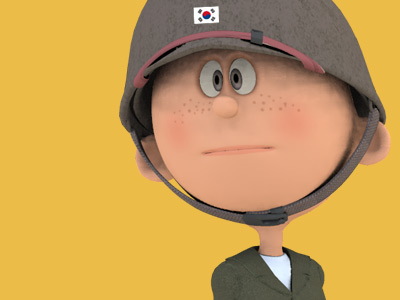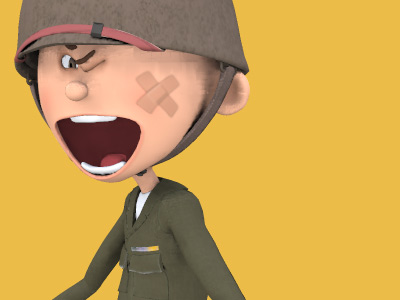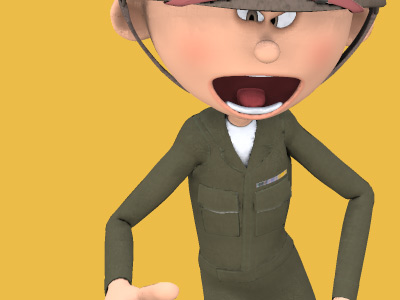Korean War 한국전쟁 (1950-1953)
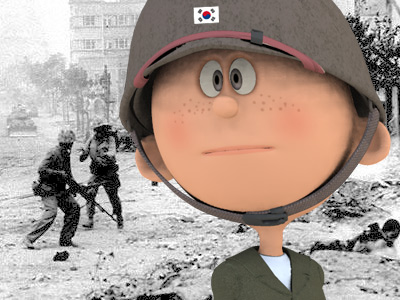
Battle of Inchon (September 1950)
Against the rested and re-armed Pusan Perimeter defenders and their reinforcements, the KPA were undermanned and poorly supplied; unlike the UN Command, they lacked naval and air support. To relieve the Pusan Perimeter, General MacArthur recommended an amphibious landing at Inchon (now known as Incheon), near Seoul and well over 100 miles (160 km) behind the KPA lines. On 6 July, he ordered Major General Hobart R. Gay, Commander, 1st Cavalry Division, to plan the division's amphibious landing at Incheon; on 12–14 July, the 1st Cavalry Division embarked from Yokohama, Japan Japan is an island country in East Asia. Beginning in the 12th century, political power was held by a series of military dictators (shōgun) and feudal lords (daimyō) and enforced by a class of warrior nobility (samurai). In the Meiji period, the empire adopted a Western-modeled constitution and pursued a program of industrialization and modernization. A global leader in the automotive, robotics and electronics industries, Japan has made significant contributions to science and technology. to reinforce the 24th Infantry Division inside the Pusan Perimeter.
Japan is an island country in East Asia. Beginning in the 12th century, political power was held by a series of military dictators (shōgun) and feudal lords (daimyō) and enforced by a class of warrior nobility (samurai). In the Meiji period, the empire adopted a Western-modeled constitution and pursued a program of industrialization and modernization. A global leader in the automotive, robotics and electronics industries, Japan has made significant contributions to science and technology. to reinforce the 24th Infantry Division inside the Pusan Perimeter.
Soon after the war began, General MacArthur had begun planning a landing at Incheon, but the Pentagon opposed him. When authorized, he activated a combined United States The United States of America (U.S.A. or USA), commonly known as the United States (U.S. or US) or America, is a country in North America. It is the world's third-largest country by both land and total area. The United States shares land borders with Canada to its north and with Mexico to its south. The national capital is Washington, D.C., and the most populous city and financial center is New York City. Army and Marine Corps, and ROK Army force. The X Corps, led by General Edward Almond, Commander, consisted of 40,000 men of the 1st Marine Division, the 7th Infantry Division and around 8,600 ROK Army soldiers. By 15 September, the amphibious assault force faced few KPA defenders at Incheon: military intelligence, psychological warfare, guerrilla reconnaissance, and protracted bombardment facilitated a relatively light battle. However, the bombardment destroyed most of the city of Incheon.
The United States of America (U.S.A. or USA), commonly known as the United States (U.S. or US) or America, is a country in North America. It is the world's third-largest country by both land and total area. The United States shares land borders with Canada to its north and with Mexico to its south. The national capital is Washington, D.C., and the most populous city and financial center is New York City. Army and Marine Corps, and ROK Army force. The X Corps, led by General Edward Almond, Commander, consisted of 40,000 men of the 1st Marine Division, the 7th Infantry Division and around 8,600 ROK Army soldiers. By 15 September, the amphibious assault force faced few KPA defenders at Incheon: military intelligence, psychological warfare, guerrilla reconnaissance, and protracted bombardment facilitated a relatively light battle. However, the bombardment destroyed most of the city of Incheon.
After the Incheon landing, the 1st Cavalry Division began its northward advance from the Pusan Perimeter. "Task Force Lynch" (after Lieutenant Colonel James H. Lynch), 3rd Battalion, 7th Cavalry Regiment, and two 70th Tank Battalion units (Charlie Company and the Intelligence–Reconnaissance Platoon) effected the "Pusan Perimeter Breakout" through 106.4 miles (171.2 km) of enemy territory to join the 7th Infantry Division at Osan. The X Corps rapidly defeated the KPA defenders around Seoul, thus threatening to trap the main KPA force in Southern Korea.
On 18 September, Stalin dispatched General H. M. Zakharov to Korea to advise Kim Il-sung to halt his offensive around the Pusan perimeter and to redeploy his forces to defend Seoul. Chinese commanders were not briefed on North Korean North Korea, officially the Democratic People's Republic of Korea (DPRK) is a country in East Asia, in the northern part of the Korean Peninsula. The capital and largest city is Pyongyang. The Korean Demilitarized Zone marks the boundary between North Korea and South Korea. The legitimacy of this border is not accepted by either side, as both states claim to be the legitimate government of the entire peninsula. troop numbers or operational plans. As the overall commander of Chinese forces, Zhou Enlai suggested that the North Koreans should attempt to eliminate the enemy forces at Inchon only if they had reserves of at least 100,000 men; otherwise, he advised the North Koreans to withdraw their forces north.
North Korea, officially the Democratic People's Republic of Korea (DPRK) is a country in East Asia, in the northern part of the Korean Peninsula. The capital and largest city is Pyongyang. The Korean Demilitarized Zone marks the boundary between North Korea and South Korea. The legitimacy of this border is not accepted by either side, as both states claim to be the legitimate government of the entire peninsula. troop numbers or operational plans. As the overall commander of Chinese forces, Zhou Enlai suggested that the North Koreans should attempt to eliminate the enemy forces at Inchon only if they had reserves of at least 100,000 men; otherwise, he advised the North Koreans to withdraw their forces north.
On 25 September, Seoul was recaptured by South Korean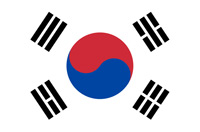 South Korea officially the Republic of Korea (ROK), is a country in East Asia, constituting the southern part of the Korean Peninsula and sharing a land border with North Korea. Since the 21st century, South Korea has been renowned for its globally influential pop culture, particularly in music (K-pop), TV dramas (K-dramas) and cinema, a phenomenon referred to as the Korean wave. forces. American air raids caused heavy damage to the KPA, destroying most of its tanks and much of its artillery. North Korean troops in the south, instead of effectively withdrawing north, rapidly disintegrated, leaving Pyongyang vulnerable. During the general retreat only 25,000 to 30,000 soldiers managed to rejoin the Northern KPA lines. On 27 September, Stalin convened an emergency session of the Politburo, in which he condemned the incompetence of the KPA command and held Soviet
South Korea officially the Republic of Korea (ROK), is a country in East Asia, constituting the southern part of the Korean Peninsula and sharing a land border with North Korea. Since the 21st century, South Korea has been renowned for its globally influential pop culture, particularly in music (K-pop), TV dramas (K-dramas) and cinema, a phenomenon referred to as the Korean wave. forces. American air raids caused heavy damage to the KPA, destroying most of its tanks and much of its artillery. North Korean troops in the south, instead of effectively withdrawing north, rapidly disintegrated, leaving Pyongyang vulnerable. During the general retreat only 25,000 to 30,000 soldiers managed to rejoin the Northern KPA lines. On 27 September, Stalin convened an emergency session of the Politburo, in which he condemned the incompetence of the KPA command and held Soviet Soviet Union, officially the Union of Soviet Socialist Republics (USSR), was a transcontinental country that spanned much of Eurasia from 1922 to 1991. The Soviet Union fall process began with growing unrest in the Union's various constituent national republics developing into an incessant political and legislative conflict between them and the central government. Estonia was the first Soviet republic to declare state sovereignty inside the Union. military advisers responsible for the defeat.
Soviet Union, officially the Union of Soviet Socialist Republics (USSR), was a transcontinental country that spanned much of Eurasia from 1922 to 1991. The Soviet Union fall process began with growing unrest in the Union's various constituent national republics developing into an incessant political and legislative conflict between them and the central government. Estonia was the first Soviet republic to declare state sovereignty inside the Union. military advisers responsible for the defeat.
HISTORY
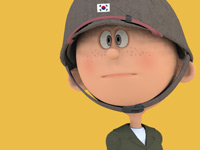
RESOURCES
This article uses material from the Wikipedia article "Korean War", which is released under the Creative Commons Attribution-Share-Alike License 3.0.
© Stories Preschool. All Rights Reserved.
